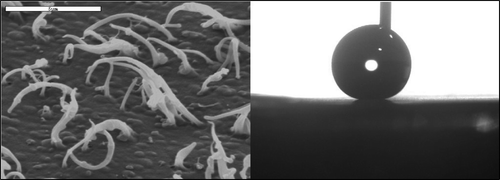About Diving BEll Spiders
Diving Bell Spiders as they are commonly known, are one a few species of spider that live underwater. They are given their name by the way they bring a bubble of air from the surface that acts a type of diving bell. This particular spider isn't very large, maxing out at less than 20 mm. The males are larger than the females and both use this diving bell method of breathing. Their fangs can pierce human skin and their bite is known to be painful.
The DiVing Bell
|
One of the more interesting characteristics of the air bubble is the it can take in oxygen from water around it that and it releases carbon dioxide through the process of diffusion. In experiments conducted by Roger S. Seymour and Stefan K. Hetz, they modeled the rate of diffusion between the carbon dioxide leaving the bubble and the oxygen entering based off the Fick general diffusion equation. Fick's general diffusion equation determines the amount of in this case, oxygen diffusing through the diving bell.
The diving bell can be changed almost on a whim, with the spiders making it able to change its size to fit their needs. Spiders with eggs can and do make it larger to accommodate the increased oxygen needs of the eggs. The number of times that a spider needs to return to the surface to breathe is all dependent on the rate of diffusion of the bell. It was found that the factors that most affect bell diffusion rates are : rate of metabolic consumption of the spiders, nitrogen leak in the bubble, and size of the bell. Resting spiders can stay breathing in the bubble for an entire day if the bell is large enough. |
Hydrophobic Hairs
|
The spider has hydrophobic hair and that is how it carries the air from the surface to its web under the water. The way these hydrophobic hairs operate is not by being uniform in shape. In fact, the structure of the hair is fairly random, of many different sizes and levels of curvature. The way that this surface becomes hydrophobic is trapping air pockets between the spider and the water. The water is then stuck in a near perfect spherical shape, and rolls off the surface with near zero deformation because that route is easier than trying to flow through the hairs. This is explained/is possible by the Cassie-Baxter theory.
|



